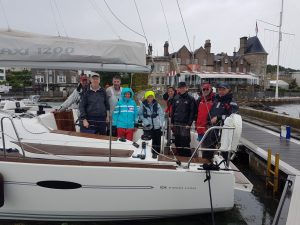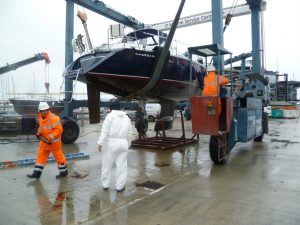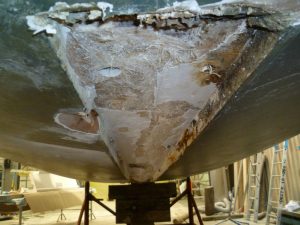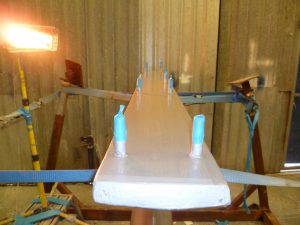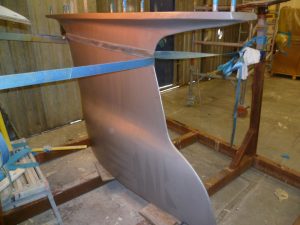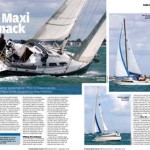Maxi Yachts
In this Section on Maxi Yachts, you can find general information relating to specific models that Maxi have produced over the years. Much of this has come from our members whose boats span virtually the whole range of Maxi’s ever produced. Models include 33, 34, 77, 85, 95, 100, 130 ketch, 340, 909, 999, 1000, 1050, 1100, 1200, 38+
We spotted this very smart Maxi 68 sailing on the River Stour, just off Harwich.
Additional reference information on many Maxi’s can be found on www.maxisidorna.com
On July 12, 2018, Groupe Beneteau signed an agreement with the Polish yard Delphia Yachts with a view to acquiring its operations designing, building and marketing sailing and motor yachts under the Delphia Yachts and Maxi Yachts brands and for other firms (including Groupe Beneteau). This acquisition will be made through a Polish entity in which Delphia Yachts will retain 20% of the capital.
Founded in 1990 and based in Olecko, Delphia Yachts is now one of Central and Eastern Europe’s leading boat builders. Since 1990, it has built over 25,000 units. In 2017, it recorded revenues of PLN 130 million (c.€30 million), with PLN 9 million (c.€2 million) in income from ordinary operations, and it currently employs 670 people.
This acquisition is in line with the objectives for growth from the Group’s Transform to Perform strategic plan, particularly in terms of:
- Increasing industrial capacity, with an 18,000 sq.m production site in Poland, specialized in building outboard motorboats and small sailing yachts, which the Group is developing a targeted strategy around;
- Increasing development capacity, capitalizing on Delphia Yachts’ new prototyping and R&D center;
- Further strengthening the product range in the liveaboard monohull sailing and river motorboat segments;
- Developing the Group’s international capabilities, through the Delphia Yachts and Maxi Yachts brands’ strong commercial presence on the Central and Eastern European and Scandinavian markets.
The acquisition of Delphia Yachts’ business is expected to be completed within the next few months, subject to obtaining the regulatory approvals required.
“To support its development on the dynamic and strategic segment for outboard motorboats and small sailing yachts, Groupe Beneteau will be able to capitalize on Delphia Yachts’ industrial capacity and expertise. This acquisition will further strengthen the Group’s solid positions and is in line with its long-term strategy for sustainable and profitable growth”, confirms Hervé Gastinel, Groupe Beneteau CEO.
Subsequent press announcements indicate that the deal was completed
We are very proud to announce that Baldour (Maxi 1200) won the Bank of England regatta in May. The Bank of England Sailing Club Crew won the Commodore’s Cup for the first boat home in the Pursuit Race, and also the Bank of England Bowl for winning the IRC Race series.
The two races on Saturday were in 20 knots of wind when Baldur achieved 12-13 knots with the kite up and 7-8 knots to windward. They also won the only IRC race on Sunday in very light airs only made possible in spring tides by the skilful timing and course selection by the Royal Ocean Racing Club races officers who organised the races.
If you’d like to help build Baldur’s race credentials, do get in touch – she’s already proved she’s got what it takes to win!
![]()
Regatta Yachts
|
Peter Stonestreet suggested that I write up my experience of removing the keel from my 1997 Maxi 34 a year or two ago as, after the tragedy of Cheeky Raffiki, this is a topical subject. The story starts with us purchasing Ariam from Roger Moon at SD Marine in 2012. She had been chartered for most of her life and we paid an appropriate price, although being a Maxi she was fundamentally sound. After a season I noticed that the bilges were never completely dry and began looking for what must be a small, but persistent leak. On a reach to starboard, the discovery of a thin, pulsing trickle of seawater appearing from a crack in a section of fibreglass fillet at the aft end of the keel, indicated the potential source.
Deep gloom descended as my first reaction was that Ariam must have been grounded hard at some stage in her life, but Neil Desty (of Destys at Hamble Point) kindly came up to Kemps Quay to inspect the hull internally. His view was that this had not the case and the structure was in perfect condition. He was reluctant to remove the keel as “you really, really don’t want to take the keel off a Maxi” but we agreed that the only way to pin down the leak was to drop the keel. Thus Ariam was de-rigged and lifted out at Hamble Point. With all 8 keel bolt nuts undone, you might have expected the keel to come away with little resistance, but not so. After hours in the slings and much heaving and hammering from above, Desty’s troops suggested it would be better for the owner not to watch the next stage of the process. This involved cutting scallops of material out of the fibreglass, front and rear and either side of the keel, and inserting crowbars to lever the keel out of its socket. With an almighty ‘bang’ the keel eventually disconnected and sat upright in the dunnage prepared for it.
A thin, black line along the sealant indicated where water was entering through a crack at the forward end of the keel, seeping along its length and emerging through a keel bolt hole at the rear, then out through the fillet. I took the opportunity to have some corrosion pits in the keel filled, after slurry blasting the cast iron. Destys then re-coppercoated it, cleaned out the keel slot and refitted the keel with new sealant. Ariam has been bone dry ever since.
The point I took home from this was that the keel attachments in the Maxi 1000/ Maxi 34 hull are immensely well engineered. First of all the keel fits into a 2″ deep slot in the hull, ensuring there is plenty of solid fibreglass structure around it. Secondly the bending moment the keel imposes on the hull, as the boat heels, is reacted over a wide area due to the flat, flared-out top section of the keel. This makes the keel more expensive to cast, but has the added benefit of allowing the 8 keel bolts to be staggered athwartships, further spreading the load. I am very happy to see how well the boat is constructed and have no worries about the keel detaching at sea.
![]() Log-in for Officer’s, Members & Boats, AGM reports, Discounts, Rallies menu.
Log-in for Officer’s, Members & Boats, AGM reports, Discounts, Rallies menu.
NB: Editor’s: read about Editing Posts & Pages here.
MAXIOWNERS.ORG == MAXIOWNERS.ORG.UK == MAXIOWNERS.NET
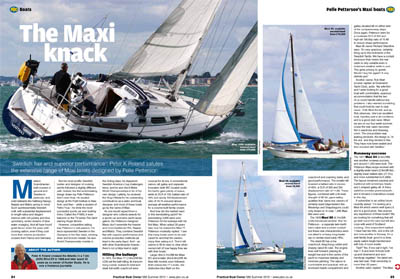 Practical Boat Owner Volume 589 (Summer 2015) contains a comprehensive review written by Peter K Poland of all Pelle Petterson’s Maxi boats, starting with the original Maxi 77 through to the Maxi 1300 and Maxi 1200. We are extremely grateful to the Editor of PBO and to Peter Poland for granting us permission to reproduce this as a PDF.
Practical Boat Owner Volume 589 (Summer 2015) contains a comprehensive review written by Peter K Poland of all Pelle Petterson’s Maxi boats, starting with the original Maxi 77 through to the Maxi 1300 and Maxi 1200. We are extremely grateful to the Editor of PBO and to Peter Poland for granting us permission to reproduce this as a PDF.
To view it, please click here.
